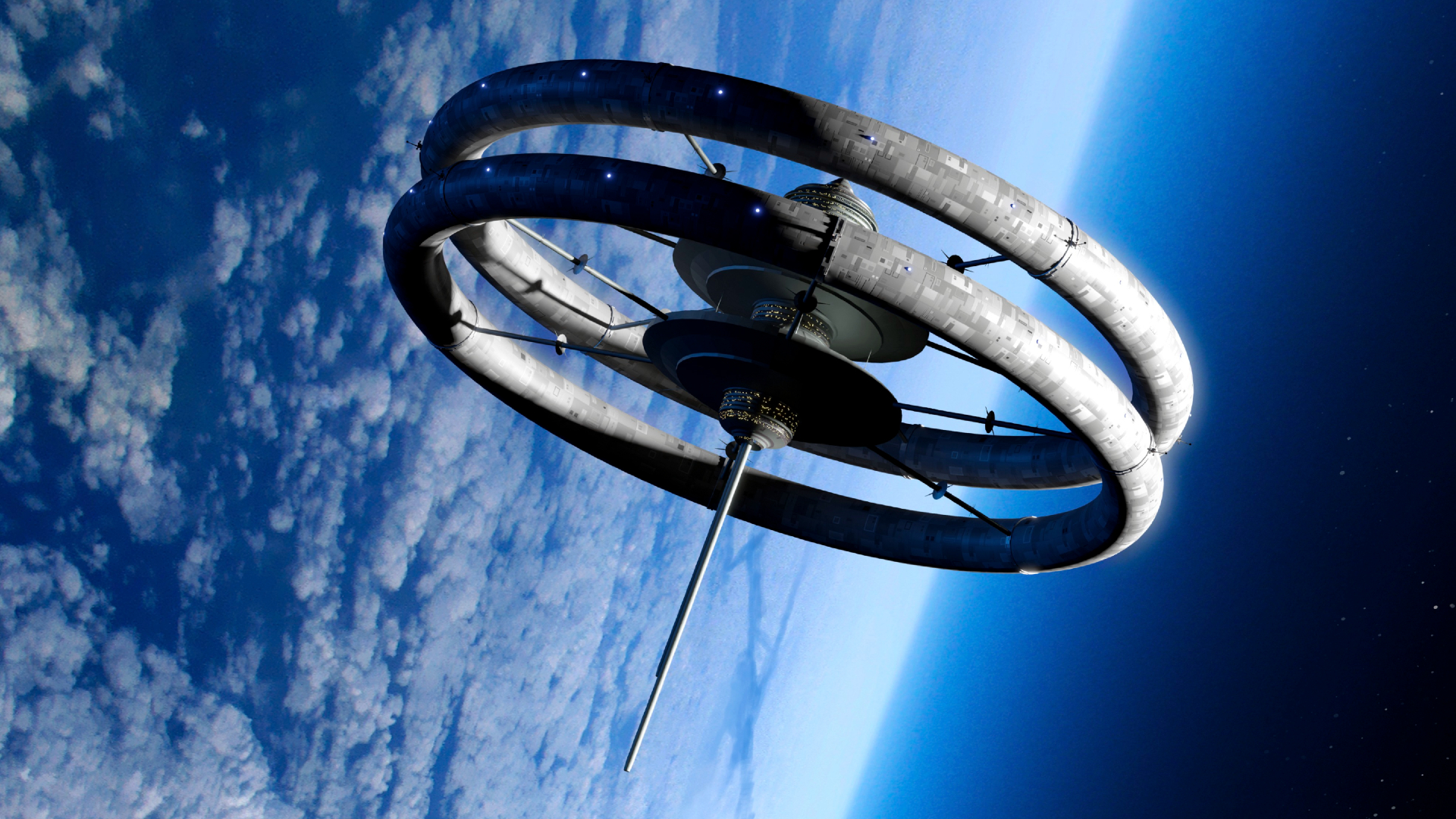Moon of Saturn Sprays Cosmic Graffiti
Icy particles ejected from a geyser on Saturn's moon Enceladus are blanketing other moons in reflective dust and ice, making them unusually bright, a new study suggest.
Researchers measuring the reflectivity, or "albedo" of several Saturnian moons found that four of them-Mimas, Tethys, Dione and Rhea-were much brighter than estimates based on past measurements.
All four moons have ancient, geologically inert surfaces, so their unusual brightness surprised scientists. Other moons in the solar system with high albedo have active water and ice geysers that rain reflective ice particles onto their surfaces.
One thing all four Saturn moons do have in common, however, is that they are embedded in Saturn's E-ring, a faint ring made up of microscopic particles of ice and dust.
The ring is so faint that scientists didn't discover it until about 30 years ago, and when they did, they noticed it was always brightest near Enceladus. This observation led many scientists to speculate that Enceladus was somehow supplying the material in the ring.
Cosmic graffiti
This idea was bolstered two years ago when NASA's Cassini spacecraft found evidence of active geysers and water volcanoes on Enceladus' south pole. Scientists now think that some of the particles ejected from these steamy sprinklers escape the moon's gravity and float into space. Saturn's gravity then ropes in the particles to form the E-ring.
Breaking space news, the latest updates on rocket launches, skywatching events and more!
"The activity on Enceladus is the reason this ring is there at all," said study team member Anne Verbiscer of the University of Virginia.
According to a new theory, detailed in the Feb. 9 issue of the journal Science, particles from Saturn's E-ring-supplied by Enceladus-are crashing into the other moons at speeds of more than 22,000 mph (36,000 km/h), embedding in the moons' surface and giving them an icy, reflective sheen.
Enceladus is probably sandblasted by its own particles as well, just to a lesser degree than the other moons, Verbiscer said. Of the material that comes out of Enceladus as plume, only 1 percent makes it into the E-ring. The rest falls back to the surface of Enceladus as snow or rain.
"The other satellites aren't being coated, they're being sandblasted," Verbiscer told SPACE.com. "Enceladus is not only being sandblasted, it's also being coated."
A rare alignment
The team was able to make the new measurements due to a rare celestial alignment that occurred on the night of Jan. 13, 2005, when the Earth, sandwiched between the Sun and Saturn's moons, traversed the entire solar disk.
"Another central transit like that won't occur until 2049," Verbiscer in a telephone interview.
This heavenly arrangement gave astronomers on Earth 12 hours to measure the albedo of seven of Saturn's 11 moons with a precision impossible at any other time.
Verbiscer said Cassini could further test her team's theory because it is currently in orbit around Saturn and can maneuver itself into a position between the Sun and the planet's four other moons. This would effectively recreate the celestial alignment that allowed Verbiscer's team to make their measurements.
But Verbiscer doesn't think such a test will happen anytime soon. "It would take a fortuitous event," she said. "It's not something that's high on the priority list of mission planners to do this."
- Video: Enceladus - Cold Faithful
- Puzzling Hot Spot Found on Moon of Saturn
- Cassini Finds an Atmosphere on Saturn's Moon Enceladus
- Images: Cassini's Latest Discoveries
Ker Than is a science writer and children's book author who joined Space.com as a Staff Writer from 2005 to 2007. Ker covered astronomy and human spaceflight while at Space.com, including space shuttle launches, and has authored three science books for kids about earthquakes, stars and black holes. Ker's work has also appeared in National Geographic, Nature News, New Scientist and Sky & Telescope, among others. He earned a bachelor's degree in biology from UC Irvine and a master's degree in science journalism from New York University. Ker is currently the Director of Science Communications at Stanford University.
